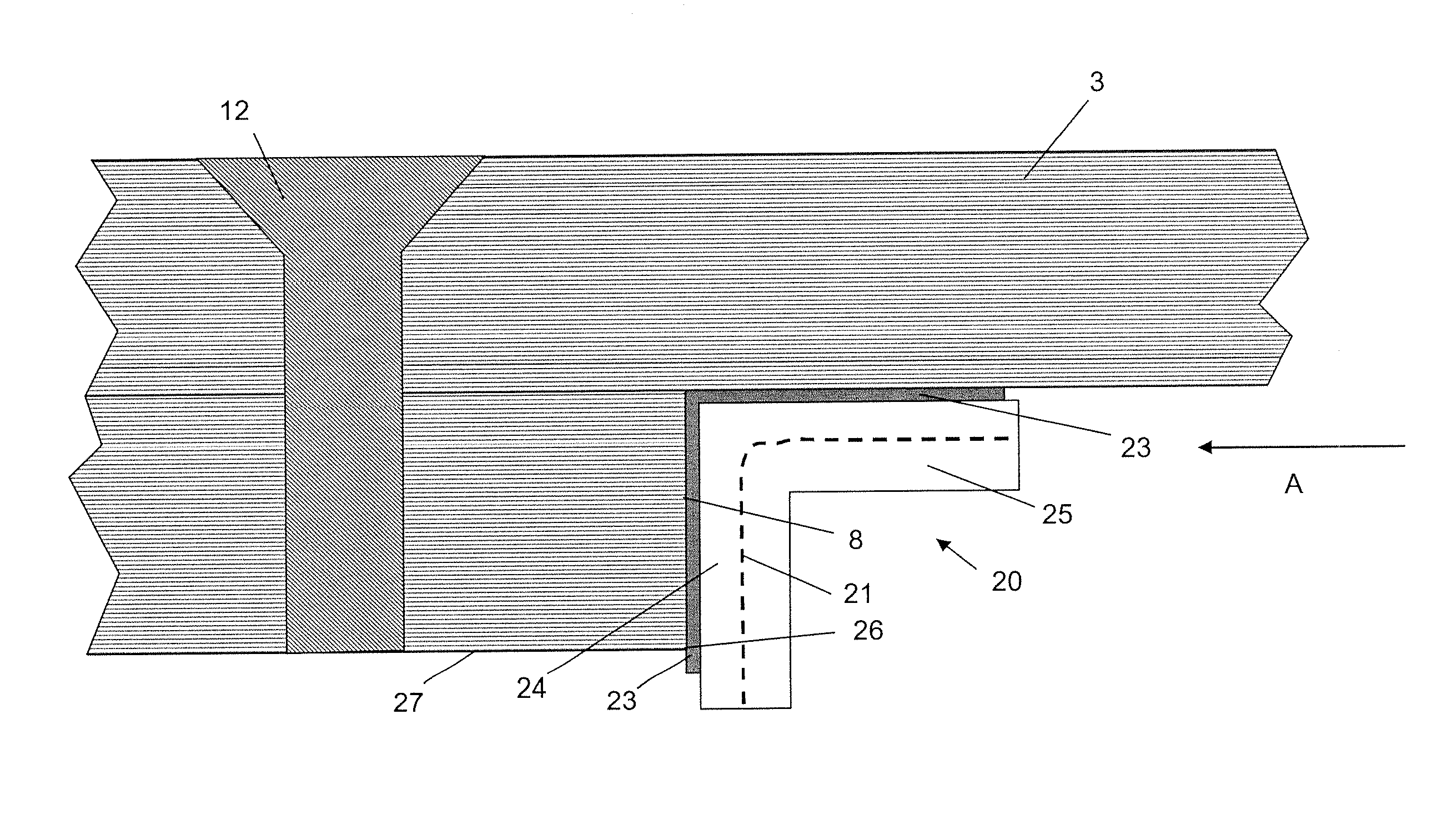Edge seal for fibre-reinforced composite structure
a composite structure and fibre reinforcement technology, applied in the field of edge seals, can solve the problems of high pressure gasses, brittle prefabricated materials which form the edge seals, and risk of shattering, and achieve the effect of providing a degree of physical flexibility and resilience, and being easy to peel off the edge seals
- Summary
- Abstract
- Description
- Claims
- Application Information
AI Technical Summary
Benefits of technology
Problems solved by technology
Method used
Image
Examples
Embodiment Construction
)
[0037]FIGS. 3-9 show a first method of attaching a seal which inhibits edge glow in the joint of FIG. 2, and the same reference numerals will be used for identical features. Referring to FIG. 3, a moulded elastomeric cap 20 is manufactured by placing an elastomeric material in a mould along with a fabric fibre reinforcement layer 21. The cap is then heated in the mould to cure the elastomeric material so that it retains its L-shaped cross-sectional profile. Suitable elastomeric materials for forming the cap 20 include fluorosilicone, silicone, polyurethane, or acrylonitrile butadiene rubber, or PR2001 (a polysulphide sealant). The reinforcement layer 21 adds strength and stiffness to the elastomeric material. Suitable materials for the fabric reinforcement layer 21 include glass, or any other non-conductive material such as polyester, para-aramid, meta-aramid, or ceramic. As an alternative to moulding, the elastomeric cap 20 could be extruded. Furthermore, the reinforcement layer 2...
PUM
| Property | Measurement | Unit |
|---|---|---|
| Pressure | aaaaa | aaaaa |
| Elastomeric | aaaaa | aaaaa |
| Structure | aaaaa | aaaaa |
Abstract
Description
Claims
Application Information
 Login to View More
Login to View More - R&D
- Intellectual Property
- Life Sciences
- Materials
- Tech Scout
- Unparalleled Data Quality
- Higher Quality Content
- 60% Fewer Hallucinations
Browse by: Latest US Patents, China's latest patents, Technical Efficacy Thesaurus, Application Domain, Technology Topic, Popular Technical Reports.
© 2025 PatSnap. All rights reserved.Legal|Privacy policy|Modern Slavery Act Transparency Statement|Sitemap|About US| Contact US: help@patsnap.com



